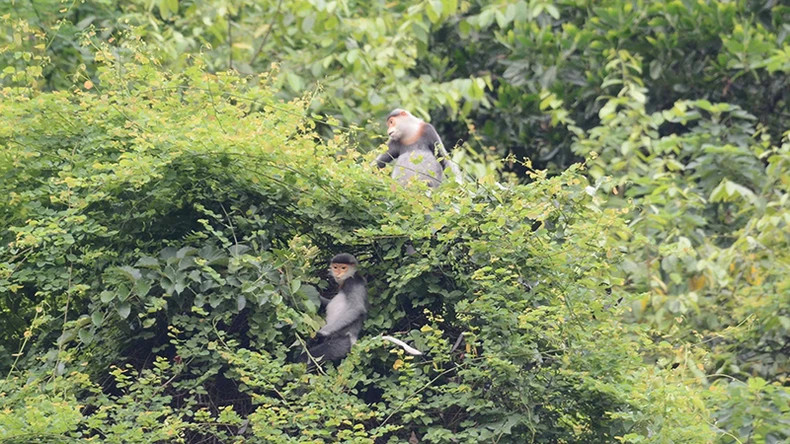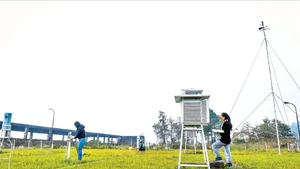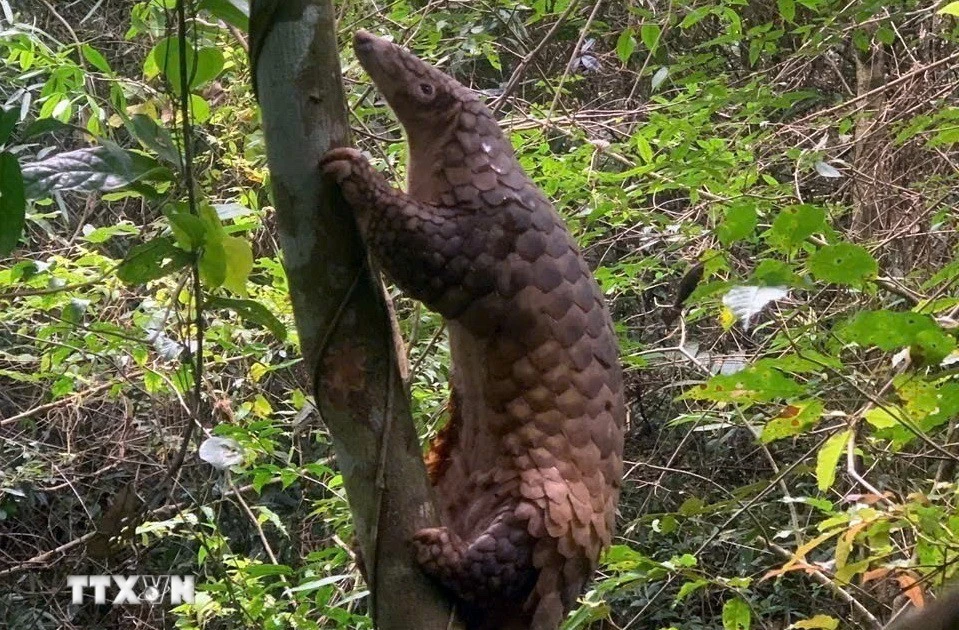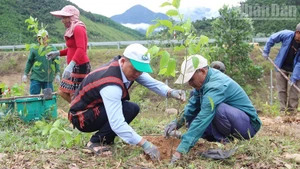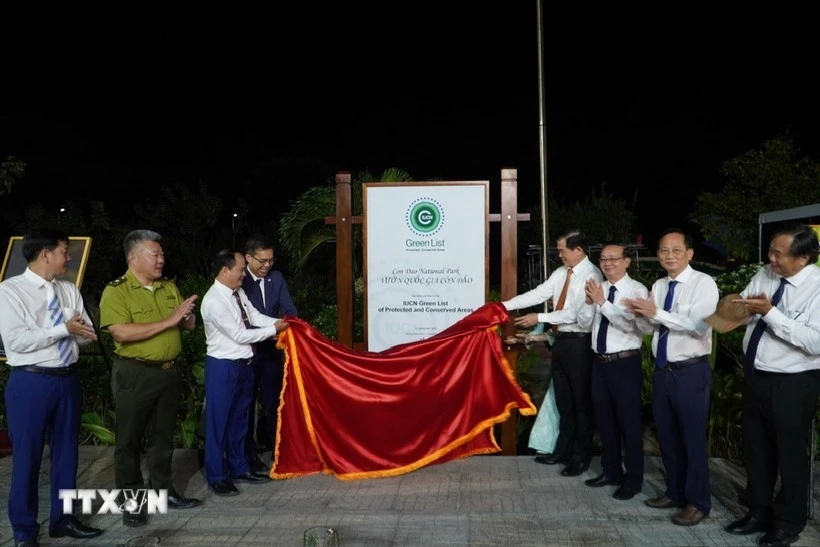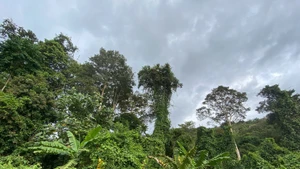The Tien Phong Group consists of residents from Tam My Tay Commune (Nui Thanh District, Quang Nam Province). For many years, they have volunteered to work with local authorities to protect the habitat and conserve the population of grey-shanked douc langurs.
Joining hands to protect a precious species
Having been notified in advance that a field research team would be coming to observe the langurs, Huynh Cong Phuong, a member of the Tien Phong Group, set aside his work to guide the team into the forest.
Phuong recounted that many years ago, as a local village police officer, he and others often patrolled the forest. With reports from the local community, they occasionally spotted grey-shanked douc langurs but were initially unaware what species they were.
The group estimated there were around 20 individuals. Explaining why they started protecting the langurs, Phuong shared that they often saw them, and they were gentle animals that didn’t damage crops. Each time they went into the forest, they saw langurs swinging from branches, eating leaves, and interacting peacefully.
“At that time, hunting traps were still common, and we always removed them during patrols, reminding and sometimes stopping people from hunting wildlife, especially these langurs. Back then, we didn’t know their exact name, so we just called them ‘dooc’,” Phuong recalled.
In 2017, Quang Nam Province and experts identified the species, informing locals that these were grey-shanked douc langurs, a critically endangered primate listed under Group IB of Vietnam’s rare and precious wildlife species. Following this discovery, a survey was conducted by GreenViet — part of the Da Nang Union of Science and Technology Associations.
Tran Huu Vy shared: “When we arrived, we were concerned because the langur population was only around 20, a very small number, making it difficult to propose a conservation project. Conservation work often involves risks, but we decided to collaborate with the community and local authorities to act together.”
Since 2017, GreenViet has been implementing a conservation programme for grey-shanked douc langurs in Tam My Tay Commune. One of the first actions was to establish the Tien Phong Group in partnership with the local People's Committee to protect the langurs.
The group initially selected 10 key members, including rangers, mechanics, and farmers. They conduct regular forest patrols four times a month, with 2–4 members per patrol, and raise awareness in surrounding communities about the importance of protecting the langurs and wildlife.
Sometimes, group members drop everything to rush into the forest upon receiving reports of traps or hunting activities threatening the langurs’ habitat.
Phuong admitted: “There were rainy days when the slippery roads made me question why I chose this ‘thankless’ task. But once, while guiding a foreign research team into the forest, I met an elderly man over 80 years old who was determined to join the group just to catch a glimpse of the langurs. Feeling the appreciation others have for nature motivated me even more.”
Initial surveys estimated around 20 langurs in four locations: Hon Duong Bong, Hon Do, Hon Ong, and Hon Duong Ban Lau, covering about 30 hectares. By early 2024, further surveys revealed significant growth, with nine groups totalling about 75 individuals, including young langurs.
This positive development reflects the success of community and local government conservation efforts. Nguyen Du, head of the Tien Phong Group, confidently stated: “Now, all locals understand and actively help protect the forest and langurs. The hunting and trapping of wildlife no longer occurs.”
Expanding habitats for the langurs
However, activities like farming, land clearing, and burning vegetation threaten the langurs’ habitat. The current 30 hectares of natural forest may not suffice for their growing population.
Recognising the issue, local authorities and forestry departments have launched projects to support conservation efforts. These include providing livelihoods for locals, planting native trees to restore forests, and increasing food sources for the langurs.
Five years ago, Nguyen Du planted a number of ironwood trees on nearly 6 hectares of his land to create a lush forest. These trees now contribute to habitat restoration. Recently, Phuong and three other households began planting nearly 5 hectares of forest with native species, transitioning from acacia trees to large hardwoods to expand the langurs’ habitat.
“In my 10 hectares of acacia forest, I’ll dedicate 1.5 hectares to newly planted hardwoods adjacent to the natural forest where the langurs live. Over time, I’ll phase out the acacias to expand the forest,” Phuong explained.
The most encouraging signal is the government’s strong commitment. In 2019, Quang Nam approved the reclassification of production forests into protected areas for grey-shanked douc langur conservation in Tam My Tay.
This effort ensures better legal protection under forestry laws. The province proposed and received approval to establish a 60-hectare protected area for the langurs, set to be part of Vietnam’s special-use forests for 2021–2030.
In May 2024, Nui Thanh District issued a resolution on biodiversity and wildlife conservation, emphasising measures to protect endangered species, in situ conservation, breeding programmes, and rewilding initiatives.
The achievements so far, including Decision 859/QD-TTg on national forestry planning, reflect the sustained conservation efforts for grey-shanked douc langurs since 2018.
The Tien Phong Group continues their quiet yet impactful work, proud to safeguard this “natural treasure” of their homeland.
